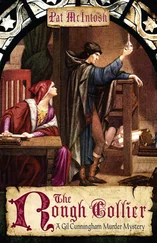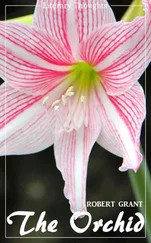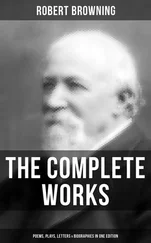1 ...7 8 9 11 12 13 ...23 An Oven
This is the Blank Oven, built on the principle of the Dutch oven, with the "baker's arch" to prevent air pockets. The patented heat spreader at the bottom assures even distribution of heat, and guards against your roasts and baked things being underdone on top and burnt on the bottom. On the door of the oven there is a heat indicator which shows how much heat there is inside.
And here are a few from England which tend to show that our cousins across the water are not as deficient in humor as the "funny papers" would lead us to believe. Certainly their descriptions would be hard to improve upon.
A Plum Cake
It was in one of those sweet old country houses where they put little bunches of lavender with the linen that we first tasted the plum cake of our dreams— glorious stuff, rich, fragrant and incredibly plummy. We admit now that our mouth was too full when we asked for the recipe, but we were overwrought and excited; anyhow, let bygones be bygones, they gave us the recipe for our customers.
The dear old housekeeper, with her ringlets and black taffeta, took us to the still room to show us how to make it, and told us fascinating things; how brown-shelled eggs are best, and how it is most auspicious to make such a cake when the moon is in its second quarter. That is why you so often see our chef on our roof in Piccadilly anxiously scanning the heavens on fine nights.
Turtle Soup
When we speak of turtle soup, our voice becomes very tender—do not think us unmanly. We have in mind the spiced turtle soup we make for those who feast regally. As you gaze into its depths, you see luscious calipee and morsels of calipash gleaming darkly through the soup that is so rich and yet so wondrous clear. Then there is our special turtle soup, cleared of all heaviness and fat, that brings roses back to the cheeks of delicate people.
Once a rival, maddened by jealousy, came and spoke lightly of our turtle soup. We killed him. It was wrong of us, for we held no game license that season, but it shows we are not unmanly.
Cakes
We have these cakes made at a little rose-covered country house, by people steeped in the sweet lore of home-made cake-craft. We will not even let them come to London for a holiday, for fear they should be contaminated by modern methods. So there they abide, unhurried and at peace, with bowls of rose water at their elbows, and little sprigs of rosemary and great crocks of buttermilk, making glorious cakes full of the goodness that is England.
Could such cakes as these be made within earshot of a London motor-bus? We think not.
A Cheese
There is in England one incomparable herd of glossy little Guernsey cows that give milk that is about one-third cream. It is from this wonderful herd that we obtain our butter. That is why there is no mistaking its golden churn.
With all humility, we say there are few, if any, cheeses as good as ours to be obtained in England. For many years we have obtained them from the same prize dairy.
We have kept a few of last year’s Cheddars for those who love the ripe splendour of well matured cheese.
Do not be misguided by the mirthless Stiltons made in hissing factories by pale youths who cycle madly to the cinema when freedom hoots from the powerhouse.
Our real farm-house Stiltons will show you why the name is venerated by mankind. Each cheese is made in the homestead of a Leicestershire yeoman, from great pans of cream, and aprons full of cowslips for the coloring. When such cheeses as these enter the dining rooms; of clubs, the faces of brigadiers soften, and admirals give little plaintive cries of love.
Chinese Ginger
Fat-root ginger with its generous warmth curbed by sweetness. And then there is the syrup—lazy in its richness.
Ham
Deep-sheathed in ivory-white fat, and close set with rosy meat...
The eating of them makes a man realize how fond he is of all his relatives — well, practically all.
Bacon
When the fragrance of its frying rises through the area, passers-by give savage cries and raven at the railings. This is one of the disadvantages of living in town.
The fascination of our bacon lies in the secret manner of its curing. It is mellowed in the suave smoke of certain rare woods and old-world herbs. Bacon with meaning and beauty in every mouthful. Often we stand for hours before a side of our wonderful bacon, musing in deep reverie, and finding therein our greatest happiness.
Put life into your descriptions—life, and when possible, a smile. Give your reader something that will stir him out of his indifference, arouse his emotions. You never see "Standing Room Only!" signs in front of an art museum or a public library or a theater where educational films or travelogues are being shown. But just try to get into almost any good movie around eight o'clock of an evening! Why the difference?
Because most people cultivate their intellects only under the lash. They revel in emotion at any and all times.
So give them a thrill! If you want to describe your mustard, weave it into a story. Tell how the girl planned this picnic lunch; of the loving care that went into every bit of it; the touch of this; the flavor of that; the delicious ham; the savory mustard; and then how the boy forgot them all just in the delight of being with her.
Tell about the man so poor he did not have a penny even to buy his boy the velocipede he had been begging Santa to bring him; so after the little tot had gone to bed, Dad sat down with his pocket knife and some old lumber and carved out a sort of wooden velocipede that not only delighted the boy’s heart, but when shown to a toy manufacturer, put Daddy beyond the reach of want for the rest of his days.
Tell how the rubber tire owed its inception to the efforts of a young veterinary to make a more comfortable wheelchair for his invalid mother; how the first mowing machine consisted of a number of scissors with one side nailed to a board, the other connected to a string which opened and shut them. Get the story back of your product. Give your reader a laugh or a tear or a lump in his throat. Stir up his emotions! You will have no trouble interesting him then!
Compare the following advertisements, for instance. The first three are good ads and pulled a reasonable number of orders. They were successful, as advertisements go. But their appeal was solely to the intellect. Once we had tried the style outlined in the last four ads, we discarded the other kind entirely, for the emotional type tripled and quadrupled our returns.
No. 1.
Roosevelt said, "Mr. Frank H. Simonds’ "History of the Great War" is a very remarkable work, and I look forward eagerly to the appearance of the remaining volumes. It is not too much to say that no other man in this or any other country can quite parallel the work that Mr. Simonds has done. It is hard to say what most to admire; the really extraordinary grasp of the essential facts of the war which is shown; or the transparent clearness with which the facts are brought out; or the entire fairness and impartiality of the conclusions."
No. 2.
Colleges Study This History
Yale University has ordered 400 copies of selected chapters from Simonds’ "History of the World War" for use as a textbook in its history classes. ExPresident Hadley says of it: "I have had so much pleasure from what Simonds has already written about the war that I shall be particularly glad to have the results of his observations and conclusions in a more permanent form."
Once in a generation, perhaps, there appears a man with the gift for making history vital, alive, interesting—a man like Ridpath or Macaulay—a genius that combines a natural gift for language, a natural gift for history and a natural gift for facts with great vision and the ability to make you see and be thrilled by his vision. Frank H. Simonds is this generation’s Ridpath—this war’s Macaulay. His tale is simple and direct enough to captivate children, yet so profoundly true as to hold the greatest scholar.
Читать дальше











